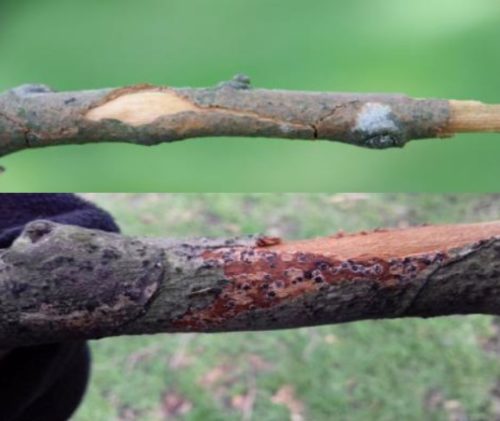Massaria disease is caused by the fungus Splanchnonema platani, affects branches that may break off as a result.
Massaria disease is caused by a the fungus Splanchnonema platani. The fungus generally affects branches with a diameter of 10 cm to a maximum of 20 cm. The infestation begins with a long purple-brown streak on the bark at the top of the branch, so the infection cannot be seen from underneath the tree. Under the purple-brown strip, the wood rots away, dries out and loses its strength, which can cause the branch to suddenly break off.
Spores of the fungus are spread by wind, birds and insects; possibly also by contaminated tools.
Plane trees in poor condition are susceptible to massaria disease A dry site and little space for the roots (limited food intake) make plane trees vulnerable. Massaria disease is mainly seen in the London plane (Platanus × acerifolia), the Oriental plane (Platanus orientalis) and the Western plane (Platanus occidentalis).
Where to find
- Plane Tree (Platanus)
Control
The damage is not visible until late (fallen branches) and then it is too late to reverse the infestation.
Remove affected branches to where the wood is unaffected.
Prevention
Decontaminate tools after use.

